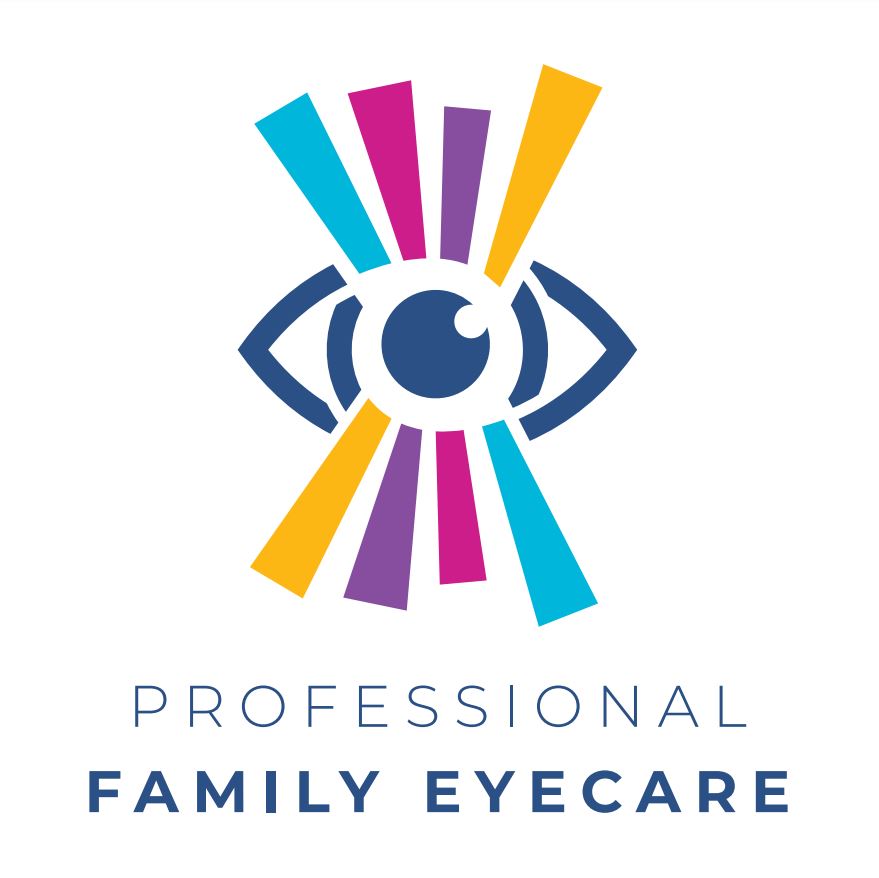
Back-to-school often means a lot of screen time, whether your child is writing an essay on a laptop, playing an educational video game or studying with a friend on a cell phone.
Unfortunately, even a few hours of screen time can cause digital eye strain, an increasingly common eye condition among kids and adults who use digital devices.
At Professional Family Eyecare, we help treat digital eye strain and educate parents on the best ways to prevent the condition altogether.
What is Digital Eye Strain?
Digital eye strain, also called computer vision syndrome, is a condition that causes eye discomfort and other symptoms caused by screen use.
Typical symptoms of digital eye strain include:
- Blurred or hazy vision
- Eye Fatigue
- Dry and red eyes
- Burning eyes
- Eye fatigue
- Shoulder and neck pain
- Headaches
How Your Child Can Prevent Digital Eye Strain
1. Teach Your Child To Take Breaks
When it comes to screen time and eye health, 20 is the magic number.
Every 20 minutes or so, remind your child to shift their gaze to an object that’s at least 20 feet away, for roughly 20 seconds. This will allow their eyes to relax and reset.
2. Have Them Stretch It Out
Hunching over a tablet, phone or computer screen can leave your child feeling stiff and sore. Stretching the muscles of their back, neck, shoulders and eyes can relieve tension and ward off the uncomfortable symptoms of digital eye strain.
To relieve neck tension, ask your child to sit or stand up straight and gently tilt their chin toward their chest, and then gently tilt their head toward their right and left shoulders.
To relieve eye strain, have them sit up straight, look downwards, and roll their eyes toward the sky in one direction, then the other. They can repeat this eye stretch as needed.
3. Practice Good Screen Time Hygiene
Here are some guidelines to stick with when your child is engaging in screen time:
- Try to position the screen 16-30 inches away from their face, either at or slightly below their eye level.
- Control the lighting in the room to reduce glare.
- Monitor how long your child is using a digital device. While it’s hard to give a [generalized] recommendation for daily screen usage limits, ask your pediatrician or eye doctor what makes sense for your child’s eye health and lifestyle.
- Remind your child to blink their eyes. Children and adults blink significantly less often when staring at a screen. Blinking is crucial for keeping the eyes lubricated, comfortable and clean.
- Minimize screen usage before bed as much as possible, as the blue light emitted from the device can disrupt your child’s sleep cycle.
- Bring your child to Professional Family Eyecare for regular eye exams. This is important for all school-aged children, but especially when they wear glasses or contact lenses.
Pediatric Eye Care in Greenville
Whether or not your child regularly uses a digital device, keeping their eyes and vision healthy is crucial for their development and academic success.
At Professional Family Eyecare in Greenville, we offer top-notch pediatric eye care from routine eye exams to contact lens consultations and more.
Start your child off on the right foot this academic year, and schedule their yearly eye exam today!
Q: How often do children need comprehensive eye exams?
- A:School-aged children should have their eyes evaluated by a pediatric optometrist every year, or as often as recommended by their eye doctor. Children who complain of vision problems, frequent headaches or struggle to keep up with their peers academically should also be brought in to the optometrist. Keep in mind that vision screenings offered in schools and pediatrician’s offices do not replace the care and experience of an eye doctor, and don’t test for many aspects of eye health and visual functioning.
Q: Should you invest in blue-blocking glasses for your child?
- A:Many parents worry about the effects of blue light emissions from digital devices. Research hasn’t found blue light to be damaging to eye health, but it can affect a child’s sleep quality and cause eye strain. Computer glasses, however, may help minimize digital eye strain in some children. Speak with your child’s optometrist about whether computer glasses can help.
Quality Frames For Prescription Eyeglasses & Computer Glasses. Visit Professional Family Eyecare for an eye exam and eyeglasses that match your style.
{
"@context": "https://schema.org",
"@type": "FAQPage",
"mainEntity": [{
"@type": "Question",
"name": "How often do children need comprehensive eye exams?",
"acceptedAnswer": {
"@type": "Answer",
"text": "Many parents worry about the effects of blue light emissions from digital devices. Research hasn’t found blue light to be damaging to eye health, but it can affect a child’s sleep quality and cause eye strain. Computer glasses, however, may help minimize digital eye strain in some children. Speak with your child’s optometrist about whether computer glasses can help."
}
},{
"@type": "Question",
"name": "Should you invest in blue-blocking glasses for your child?",
"acceptedAnswer": {
"@type": "Answer",
"text": "The internal and external health of the eye is assessed during a pediatric eye exam, as well as their visual health. The optometrist will test visual skills like eye movement, tracking abilities, eye teaming, color vision, depth perception, peripheral awareness, eye focusing and visual acuity. Be sure to bring your child in annually for a comprehensive eye exam to make sure their eyes and vision are developing normally. The earlier an eye problem is caught, the higher the chances of successful treatment. And remember, school vision screenings are no substitute for the care and expertise of a pediatric optometrist."
}
}
]
}
